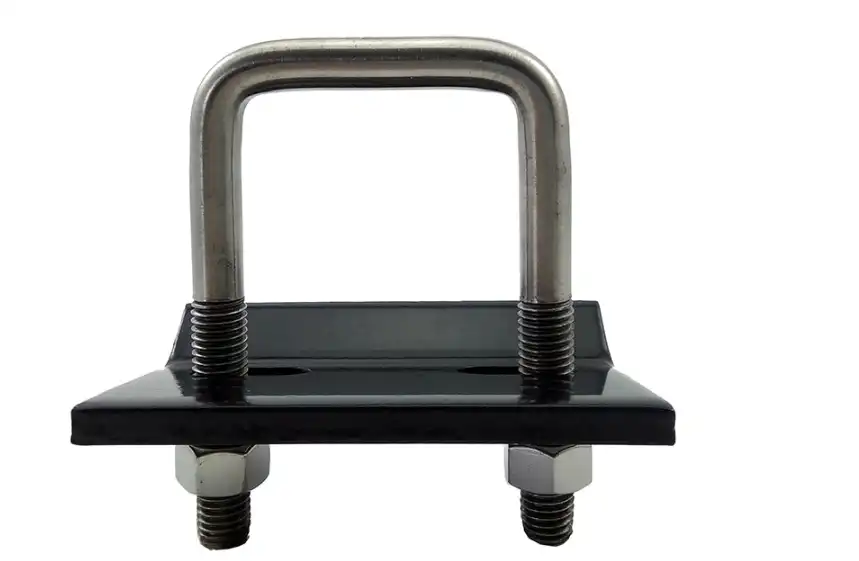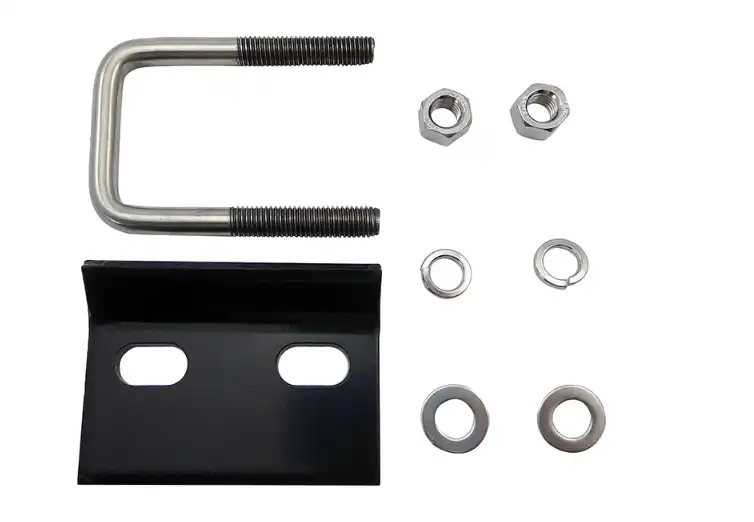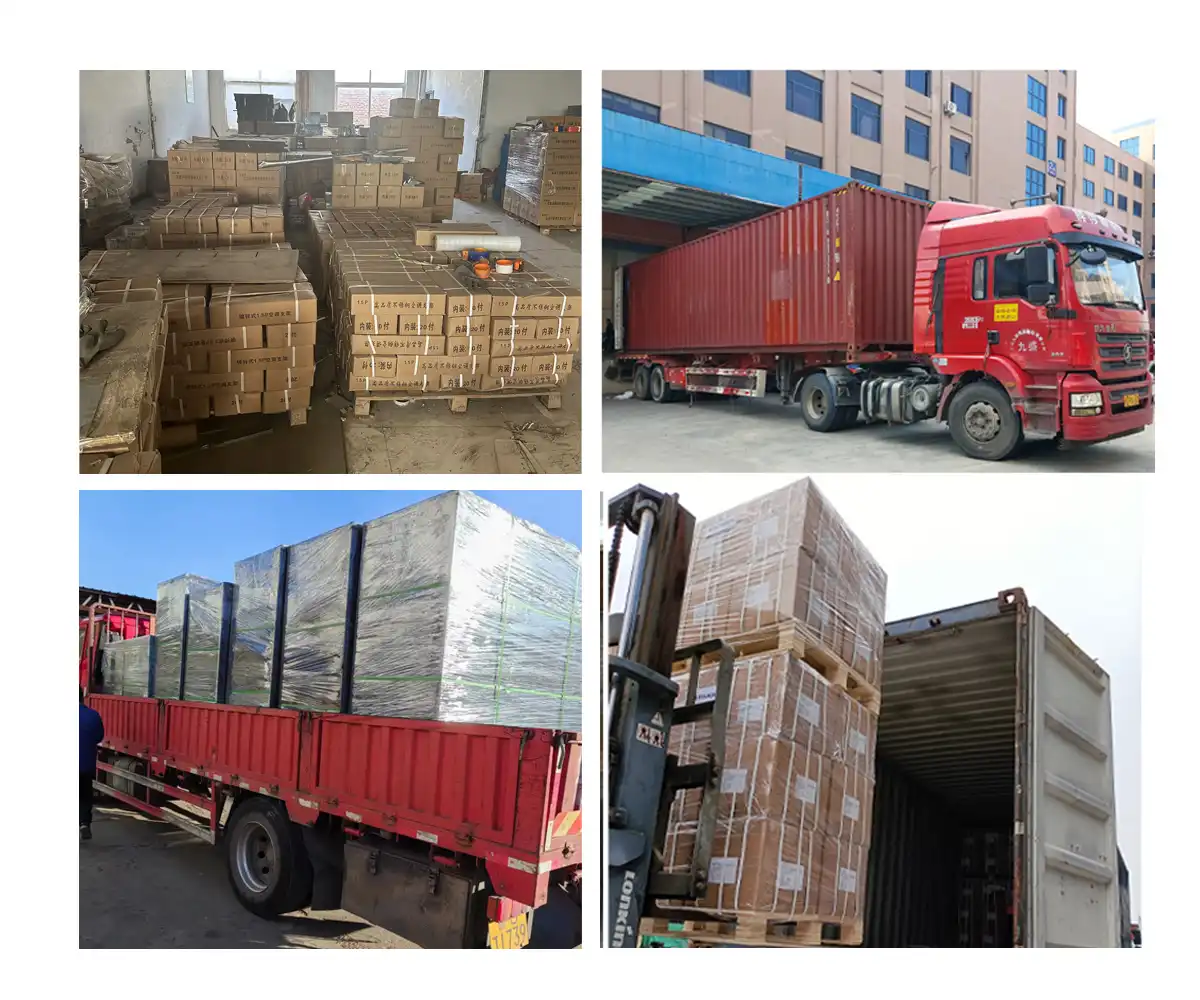How to make a hitch tighter?
2025-09-30 11:07:16
Picture this: you're heading out for a weekend camping trip, trailer loaded and ready to go, when you notice an annoying rattle and wobble coming from your hitch connection. The loose play between your hitch and receiver not only creates irritating noise but also poses serious safety risks that could compromise your entire towing experience. If you've ever experienced the frustration of a sloppy hitch connection that makes every bump in the road feel like a potential disaster, you're not alone. The solution lies in understanding how to properly tighten your hitch using the right techniques and equipment. A quality hitch tightener is the key component that eliminates unwanted movement, reduces wear on your towing equipment, and ensures a secure connection between your vehicle and trailer for safer travels.

Understanding Hitch Tightener Mechanisms
A hitch tightener serves as the critical component that bridges the gap between your vehicle's receiver tube and the hitch insert, effectively eliminating the loose play that causes rattling, noise, and potential safety hazards. The mechanism works by applying controlled pressure at specific contact points, creating a snug fit that maintains stability throughout your towing journey. Professional-grade hitch tighteners utilize advanced engineering principles to distribute forces evenly across the connection point, preventing metal fatigue and extending the lifespan of both your hitch and receiver components. The physics behind hitch tightener functionality involves creating multiple contact points that work together to absorb vibrations and maintain consistent pressure under varying load conditions. When properly installed, a hitch tightener transforms a loose, potentially dangerous connection into a solid, reliable joint that can handle the dynamic forces encountered during towing operations. Modern hitch tighteners incorporate features such as adjustable tension mechanisms, corrosion-resistant materials, and compatibility with various hitch sizes to provide versatile solutions for different towing applications.
-
Types of Hitch Tightening Solutions
Different towing scenarios require specific approaches to achieving optimal hitch tightness, and understanding the various types of hitch tightener solutions available helps you choose the most appropriate option for your needs. Anti-rattle pins represent one of the most common and cost-effective solutions, designed to eliminate the vertical play between the hitch pin and receiver holes. These devices typically feature expandable mechanisms that fill the gap and prevent movement while maintaining easy installation and removal capabilities. Weight distribution hitch tighteners offer comprehensive solutions for heavier loads, incorporating spring-loaded mechanisms that not only tighten the hitch connection but also help distribute trailer tongue weight across the tow vehicle's axles. Cushion hitch tighteners provide another approach, using shock-absorbing materials to reduce impact forces while maintaining a tight connection. More advanced solutions include hydraulic and mechanical hitch tighteners that offer precise adjustment capabilities and can accommodate varying load conditions throughout your towing experience.
Professional Hitch Tightener Installation Techniques
Proper installation of a hitch tightener requires attention to detail and adherence to manufacturer specifications to ensure optimal performance and safety. The installation process begins with thoroughly cleaning both the receiver tube and hitch insert to remove any dirt, debris, or corrosion that could interfere with proper fitment. Professional installers recommend using appropriate cleaning solvents and wire brushes to achieve a clean, smooth surface that allows the hitch tightener to function effectively. The positioning of your hitch tightener within the receiver assembly significantly impacts its effectiveness and longevity. Proper alignment ensures even pressure distribution and prevents premature wear of components. Most professional-grade hitch tighteners include detailed installation instructions that specify torque requirements, positioning guidelines, and compatibility considerations. Following these specifications precisely helps achieve the optimal balance between tightness and accessibility for future adjustments or removal.
-
Step-by-Step Installation Process
Begin the installation process by inserting your hitch into the receiver and securing it with the original pin to establish the baseline connection. Next, identify the optimal location for your hitch tightener based on the specific design and your vehicle's receiver configuration. Many hitch tighteners require specific positioning relative to the hitch pin location to function effectively. Remove the original pin and carefully position the hitch tightener according to manufacturer instructions, ensuring all components align properly before proceeding with final installation. Tighten the hitch tightener gradually, checking for proper fit and function at each step of the process. Over-tightening can damage components or make future removal difficult, while insufficient tightening fails to eliminate the unwanted play. Professional installers recommend using calibrated torque tools when specified by the manufacturer to achieve consistent, repeatable results. Test the installation by attempting to move the hitch within the receiver – properly installed hitch tighteners should eliminate virtually all movement while still allowing for necessary articulation during towing operations.

Maintenance and Adjustment of Hitch Tighteners
Regular maintenance of your hitch tightener ensures continued performance and extends the service life of both the tightening device and your hitch components. Environmental factors such as road salt, moisture, and debris can affect the performance of hitch tighteners over time, making periodic inspection and maintenance essential for optimal function. Develop a routine inspection schedule that includes checking for signs of wear, corrosion, or damage that could compromise the effectiveness of your hitch tightener system. Proper lubrication plays a crucial role in maintaining hitch tightener functionality, particularly for adjustable or moving components. Use only lubricants recommended by the manufacturer, as incompatible products can attract dirt and debris or cause deterioration of sealing materials. Clean the hitch tightener thoroughly before applying lubricants, and ensure excess lubricant is removed to prevent accumulation of contaminants that could interfere with proper operation.
-
Troubleshooting Common Issues
When hitch tighteners fail to perform as expected, systematic troubleshooting helps identify and resolve the underlying causes. Common issues include insufficient tightening, which allows continued movement and noise, or excessive tightening that can damage components or make removal difficult. Check for proper installation according to manufacturer specifications, and verify that all components are compatible with your specific hitch and receiver combination. Wear patterns on hitch tightener components provide valuable diagnostic information about installation quality and usage patterns. Uneven wear typically indicates misalignment or compatibility issues that require attention. Excessive wear in specific areas may suggest the need for adjustment or replacement of worn components. Document the condition of your hitch tightener during regular inspections to track deterioration patterns and plan appropriate maintenance or replacement schedules.
Choosing the Right Hitch Tightener for Your Needs
Selecting an appropriate hitch tightener requires careful consideration of your specific towing requirements, vehicle characteristics, and intended applications. Weight capacity represents one of the most critical factors, as hitch tighteners must be capable of handling the forces generated by your trailer and cargo load. Professional-grade hitch tighteners typically specify maximum weight ratings and compatibility with different hitch classes to help guide your selection process. Material quality and construction methods significantly impact the durability and performance of hitch tighteners under demanding conditions. High-strength steel construction with appropriate surface treatments provides the best combination of strength, durability, and corrosion resistance. Look for hitch tighteners that incorporate quality manufacturing processes such as precision machining, heat treatment, and protective coatings that enhance performance and extend service life.
-
Compatibility Considerations
Vehicle-specific factors such as receiver tube dimensions, hitch pin size, and clearance requirements must be carefully evaluated when selecting a hitch tightener. Standard receiver sizes include 1.25-inch, 2-inch, and 2.5-inch configurations, each requiring specifically designed hitch tighteners for proper fit and function. Measure your receiver dimensions precisely and verify compatibility with potential hitch tightener options before making a purchase decision. Consider the range of trailers and applications you plan to use with your hitch tightener system. Versatile hitch tighteners that accommodate multiple hitch sizes and configurations provide better value and flexibility for users with varied towing needs. However, specialized hitch tighteners designed for specific applications may offer superior performance for dedicated uses such as commercial towing or recreational vehicle applications.

Conclusion
A properly functioning hitch tightener is essential for safe, quiet, and reliable towing operations. By understanding the various types of hitch tightening solutions available and following proper installation and maintenance procedures, you can eliminate the frustrating rattles and potentially dangerous play that plague loose hitch connections. The investment in a quality hitch tightener pays dividends through improved towing stability, reduced wear on equipment, and enhanced peace of mind during your travels.
Cooperate with Qingdao RUIRUI Machinary Co., LTD.
Qingdao RUIRUI Machinery Co., LTD. stands as your trusted partner for high-quality hitch tightener solutions, combining over 15 years of manufacturing expertise with cutting-edge production capabilities. As a leading China hitch tightener factory, we specialize in producing premium hitch tighteners using advanced manufacturing processes including progressive stamping, CNC machining, and precision coating technologies. Our ISO-certified facilities ensure every hitch tightener meets stringent quality standards while maintaining competitive pricing as your preferred China hitch tightener supplier.
Our comprehensive manufacturing capabilities extend beyond basic production to include customization services that meet your specific requirements. As an established China hitch tightener manufacturer, we offer OEM support and can develop custom solutions for unique applications. Whether you need standard hitch tighteners for sale or specialized designs, our experienced R&D team works closely with customers to deliver innovative solutions. Contact us at info@qdkshd.com to discuss your high quality hitch tightener needs and discover why leading companies choose RUIRUI as their preferred China hitch tightener wholesale partner for competitive hitch tightener prices and reliable delivery.
FAQ
Q: What tools do I need to install a hitch tightener?
A: Most hitch tightener installations require basic hand tools including wrenches, sockets, and possibly a torque wrench depending on the specific model and manufacturer requirements.
Q: How often should I check my hitch tightener?
A: Inspect your hitch tightener before each towing trip and perform detailed maintenance checks at least monthly or every 1,000 miles of towing, whichever comes first.
Q: Can a hitch tightener work with any receiver size?
A: No, hitch tighteners are designed for specific receiver sizes. Always verify compatibility with your receiver dimensions before purchasing to ensure proper fit and function.
Q: What's the difference between anti-rattle pins and hitch tighteners?
A: Anti-rattle pins primarily eliminate vertical play in the pin connection, while comprehensive hitch tighteners address multiple types of movement and provide more complete stabilization of the hitch connection.
References
1. "Trailer Towing Guidelines and Safety Procedures" by National Highway Traffic Safety Administration, Transportation Research Board
2. "Mechanical Fastening Systems for Automotive Applications" by Robert Smith, Society of Automotive Engineers
3. "Advanced Materials and Manufacturing Processes for Towing Equipment" by Jennifer Chen, Institute of Mechanical Engineers
4. "Quality Assurance in Metal Fabrication and Stamping Operations" by Michael Johnson, American Society for Quality
Send Inquiry
You may like